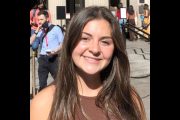
Last Saturday Sonia Sotomayor, 55, was confirmed as the 111th Justice in the history of the Supreme Court of the United States — as many have noted, the third woman and the first Hispanic.
Sotomayor’s confirmation hearings were probably the most closely watched since those of Clarence Thomas back in the early 1990s. When she puts on that robe for the first time, Justice Sonia Sotomayor will enter a new world — a world the man she is replacing, the retiring David Souter, once described as akin to “walking through a tidal wave.”
She will take the seat reserved for the junior justice, on the spectators’ far right. Other justices will move to new places on the bench. One of Justice Sotomayor’s new responsibilities will be to answer the door during private conferences. She will also have the task of keeping notes during those conferences and preparing reports on what the other eight justices have decided regarding as many as a couple of thousand appeals. Neither exciting nor glamorous work, but as the saying goes, someone has to do it.
Justice Sotomayor will enter a legal environment where the cases are much harder, where the stakes are considerably higher, and where legal precedent has a whole new meaning. Take the concept of “settled law” she occasionally invoked during the confirmation hearings. Such invocations will no longer work, because in the cases likely to be taken up by the Supreme Court, if the law were settled the cases wouldn’t reach them.
Complicating matters will be construction projects going on in the Supreme Court building itself, forcing her and her staff (to include four law clerks) into temporary offices until the project is finished late next year. This will mean learning her way around the building twice.
Learning to negotiate her new world quickly will be of crucial importance, since the junior justice votes last when justices take initial votes on cases. There will doubtless be cases where Sotomayor’s will be the tie-breaking vote, including on major decisions to be handed down by the Court.
Justice William J. Brennan wrote back in 1973, “I say categorically that no prior experience, including prior judicial experience, prepares one for the work of the Supreme Court. The initial confrontation on the United States Supreme Court with the astounding differences in function and character of role, and the necessity of learning entirely new criteria for decisions, can be a traumatic experience for the neophyte.”
In just under one month, Sotomayor hears her first case: Citizens United v. Federal Election Commission. This case, which received little attention outside legal circles when it first surfaced this past March, has important ramifications for how campaign finance reform is interpreted in light of the First Amendment. Should government limit the showing of a negative documentary about a candidate (in this case, Hillary Rodham Clinton) under campaign finance laws? The Court will hear new arguments on this case on September 9. The parties will be asked to address whether it should overrule an earlier major decision about the regulation of corporate speech as part of McCain-Feingold.
The Court will also hear a number of business law cases this fall. Most are not headline-grabbers: cases having to do with patents, the permissible level of punitive damages, whether parallel conduct between competitors violates anti-trust law, and so on.
The visible issues raised during Sotomayor’s confirmation hearings left us able to do little more than guess at how she will vote on any of these cases.
Criminal-related cases are a slightly different story, given Sotomayor’s career track where she has a paper trail as a former prosecutor as well as a federal judge. Her track record here is considerably more conservative than one might think. As an assistant district attorney in the crime-ridden New York City of the 1970s, she was described as "police-like" and gave defendants including those of Puerto Rican descent no special breaks. Later, she had a reputation as a “law and order” judge who ruled in two cases that evidence could be used to convict a defendant even though police had violated the defendant’s rights in obtaining it. She reasoned that they had “acted in good faith.” In another case, she upheld a man’s crack cocaine conviction despite what she called a “mistaken arrest.”
In a couple of cases due to come before the Court this fall, the nine justices will be asked to decide whether juvenile defendants may be sentenced to life without parole for crimes where no one was killed.
Not raised during her confirmation hearings were her views, if any, on whether the Supreme Court ought ever to take into consideration decisions of foreign courts, as it did in 2005 when barring the execution of juvenile offenders. It was following this case that Justice Stephen Breyer, a Clinton appointee, made the brow-raising remark about whether our Constitution can survive in a global age. Sotomayor has made no such remarks that this writer knows of.
The judicial philosophy that will herald Sotomayor’s legacy will probably not become apparent right away, although she is not expected to decide cases differently from Souter. According to Richard H. Pildes, professor of law at New York University who served as a law clerk for Justice Thurgood Marshall, “Few justices write broadly or stake out new terrain in their first terms.” He added: “The Supreme Court is an intimate group of equals who will live together for years. Most newcomers tread gently as they come to terms with the dynamics of the group and a daunting array of new issues, including questions lower court judges never face, such as how bound to be by prior Supreme Court decisions.”
Chief Justice John Roberts welcomed his newest colleague to the bench last Saturday, and said she could begin work “without delay.” She has just under a month of work to prepare for that first case.
The Supreme Court’s fall term formally begins on October 5.
Photo: AP Images



